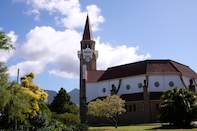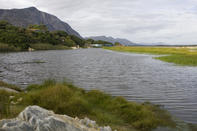A Village Full of Character
Many of the houses have been lovingly restored and the locals - a mixed bag of well-to-do retirees, artists and rural folk - take pride in the town’s Cape Victorian and Edwardian architectural heritage, and many regard it as one of South Africa's best preserved villages.

Here you get dorps (small towns) and you get villages, and there is not a smidgen of doubt in my mind that Stanford falls within the latter category. The original market square dating back to 1785 is still pristine, with lots of interesting little shops, galleries and restaurants, as well as numerous outdoor activities on offer. The town is situated on the R43, 23 kilometres from Hermanus.
Did you know? The original De Kleine Rivier farmhouse, built in 1785, is one of the oldest Overberg houses still in existence. Stanford was established nearly 170 years ago - in 1857 - on the farm Kleinrivier, at the time owned by Sir Robert Stanford. Although originally a farming community with narrow gravel lanes leading down to the Klein River, the village was well designed and full of character.
Kleinrivier Vlei

This one is a real lagoon, where the mouth of the Kleinrivier spends most of the year blocked by a sandbar, providing boating, boardsailing and fishing along about 10 kilometres of open water (the old salty dogs around here say it's the best place in the Western Cape for leervis and elf).
The river, a rather small one for the size of the lake it creates, rises immediately behind the Kleinrivier Berge that soar up behind the burgeoning seaside town of Hermanus. First it flows east towards Riviersonderend, then it does a sneaky U-turn through the Akkedispoort and flows west, meandering past the village of Stanford before reaching Walker Bay.
If you really want to spoil someone, book into Mosaic Farm's stone cottages right on the resplendent shore. For years the empty manor, built in 1892, was known locally as the Stanford Spookhuis (‘ghost house'), which only adds to its romantic mien.